Bunk Management
Dr. Robbi H. Pritchard
South Dakota State University
Introduction
There is a quote in the fly page of the old Henry and Morrison Feeds and Feeding textbook that states "The
eye of the master fattens his cattle". My edition dates to 1928. Surely we have come a long way since that
observation was made, or have we? Certainly technology has provided us with many new tools for feeding
cattle. Today we know much more about the nutritional needs of feedlot cattle. We have the ionophores to
favorably alter fermentation, we have anabolic implants that stimulate growth and appetite and we have
antibiotics to control metabolic or infectious disease problems. Computers balance our diets, project our
close-outs and can provide us with more records than we can seem to use.
Even with all of these tools at our disposal, not everyone is successful at feeding cattle. In some instances,
the problem is poor marketing skills. But more often than not, production costs are simply too high. In
many of these situations the tracking program can tell us that feed/gain was high or that intakes and gains
were low, but the programs don't tell us why. The diets look right on paper and management was by the
book. The cattle feeder typically blames the feed company and the feed company typically blames the
cattle. The problem goes unresolved.
It seems to me that the old quote holds true today. Bunk management is a crucial component of efficient
beef production. It relies on "the eye of the master" and is at the root of many disappointing close outs.
The goal of this paper is to bring an awareness to the reader of the costs associated with poor bunk
management, the keys to identifying the problem in feedlots and the criteria that must be considered in
implementing an effective program in commercial feedlots.
How Much Is Bunk Management Worth?
All other things being equal, if you can increase the daily dry matter intake (DMI) consumed by a set of
yearlings by 10%, you can increase return by $11.15/head. If your management is lacking and your cattle
consume 10% less than they are capable of consuming, profits will be $15.25/head less than was possible.
Intake affects feed conversion (F/G) and average daily gain (ADG). These in turn affect both fixed and
variable costs per unit of gain and your bottom line.
The computer projection you run on a pen of steers reflects some estimate of average DMI. In Figure 1, I
have graphed 4 computer projection equations of DMI for a pen of cattle. One of them is in your computer
projection program. These projections each have their strengths and weaknesses but are noticeably
different. These differences are a reminder that computers are only tools to help. It still requires good
experienced management to be sure that cattle are truly consuming as much feed as possible.
Feed conversions are of even greater economic consequence. All other factors being equal, a 10% drop in
F/G increases profit $19.33/head. A 10% higher feed/gain lowers profits by $26.33/head. This is the
economic drive that has made ionophores so popular. Feed conversion costs have also pushed us to
increasingly higher concentrate diets. To crank up the energy density of our diets we replaced forage with
grain. Forage used to be our bunk manager. Forage helps to fill cattle, prevent over consumption and
stabilizes fermentation. When little forage is left in the diet, the feed caller has to manage these
problems. When feeding lower roughage diets we see an increase in bloat, sudden death and acidosis in our
feedlots. These conditions, often caused by poor bunk management, cause increases in our final F/G at
close out and cost us money. A 0.5% incidence of sudden death in the feedlot after 60 days on feed costs
$1.70/head. The cost of chronic, or at least frequent, subacute acidosis is worse. It can cause the 10%
increase in F/G that is worth $26/head.
At one point in our work we were able to feed a split of cattle the same diets in two different feedlots. One
yard (B) was managed by an "experienced midwestern cattle feeder". The basic premise was that to feed
cattle, you simply keep the bunks full. The other yard was managed on the principle that feed deliveries
should match cattle appetites. Daily as fed feed deliveries for the two pens in this experiment are plotted in
Figure 2. Performance for these cattle is shown below the graph. Surprisingly, feed deliveries were similar
for both lots, but ADG and F/G are dramatically affected by the erratic feed deliveries. You can apply your
own cost figures to determine how expensive this was.
Cattle in yard B always had feed in front of them and they received as much feed as those in yard A. How
could performance have slipped so badly? Erratic intakes lead to feed wastage and digestive upset. Both of
these increase the amount of feed required/unit gain and subsequently our cost of gain. The key to solving
this problem is simply bunk management.
Bunk Management
Bunk management means matching the amount of feed delivered to the amount of feed cattle can handle.
For many, if not most, good bunk managers, this is a gut feeling system. The gut feeling comes with
experience. It is a lot like golf. To the novice, the concept of using clubs to knock the ball into that little cup
450 yards away seems impossible. With practice, you do it in 4 strokes. Good bunk management, like golf,
takes practice, but with a good explanation of what is happening, you can reduce the time needed to learn.
The first thing to remember is that cattle are self propelled fermentation vats and fermentation vats like
everything to stay constant. Staying constant means providing a consistent diet in consistent amounts at
consistent times. Variation is the number one enemy of fermenters. The second major point to keep in
mind is that cattle do not know how much to eat. If they did, founder and acidosis would be unheard of. It
can be a long way from the rumen to the brain of a steer. Too often the brain is still saying eat when the
ruminal microbes are at or beyond their limits. It is your job to know the difference between how much
they want and how much they can handle. The third thing to keep in mind is that it can take two or three
days for a mistake to show up. Without records of what has been happening, it can be difficult to know
why cattle are off feed today.
The fact that cattle are creatures of habit is extremely useful in bunk management. By establishing good
eating habits for the steers you can provide the constant conditions that help fermentation. Providing
consistent amounts and mixes of feed is crucial. The key is having good scales under your feed wagon.
Wagner (1988) sorted a set of background heifers into two groups. They were being fed a diet of alfalfa,
corn silage, corn and supplement. The feed was weighed and mixed before feeding to the high management
group. For the low management group, feed quantities were estimated using an end loader and buckets. To
know just how much feed the low management group was fed, the feed piles were weighed before and after
feeding. Performance data are shown in Table 1. Based on the production costs and the cost of owning a
feed wagon (Table 2), Wagner calculated that he would have to feed 100 heifers for 145 days annually to
pay for the wagon. Feeding more cattle or for longer periods of time would mean weighing and mixing feed
is making you profits well above the cost of the wagon. You can assume the cost responses are even greater
when higher concentrate diets are being fed.
The wagon and scales can ensure uniform mixes and amounts of feed, but you need to be sure you are
scheduling feed uniformly. Galyean et al (1992) fed one group of yearlings ad libitum. For the other group,
feed deliveries bounced up or down 10% each day. Close-out DMI were similar by design. The effects of
fluctuating deliveries on ADG and F/G were dramatic (Table 3).
Bunk Sheets
Let's say you have a healthy set of steers on feed. You have a well balanced diet and are using a mixer
wagon with scales. You pull into the feed alley this morning and the first bunk is completely empty. How
much feed do you unload? Since the bunk is empty, obviously you should feed a little more than you fed
yesterday. You remember/guess that they must have been fed 3500 lb. yesterday so you unload 3750 lb.
today. You go through the same thought process on the next pen, but on the third pen you find the bunk
half full of feed. You drive on by and plan to cover it later. Tomorrow, the first pen is half full of feed and
the third pen is slick and so you repeat the process.
Why did the first pen back off feed? Maybe because they had already been bumped from 3250 lb. to 3500
lb. two days ago. When you bumped them again to 3750 you had bumped the feed delivery 15% in two
days and overfed the cattle. You probably did the same thing to the third pen earlier in the week. Your feed
deliveries are erratic and you can expect feed/gain to be higher than it should be. To beat this problem, you
need to be able to track where the cattle have been. To do that, you need a bunk sheet and an alarm clock.
I have an example of our bunk sheet shown in Figure 3. There is room for date, pen of cattle and a bunk
score. We carry this sheet with at least 4 days of records with us whenever we are calling feed. We call
feed at the same time every day. The bunk score is a numerical system from 0 - 4 (Table 4) that tells us
how much feed was in the bunk before feeding on that date. Looking back, the bunk score, combined with
the feed call, tells you if intakes are going up, coming down or holding steady. It helps us avoid the erratic
feed delivery problems in the previous example. The bunk sheet is an essential tool but alone it does not
provide all of the information needed to make the feed call.
Feed Calls
To make a feed call you obviously need to know how much feed cattle have been consuming. If you
delivered 3750 lb. of feed yesterday and the bunk score today is a 2, the cattle probably only consumed
2500 lb. of feed. With 1250 lb. of feed in the bunk you need to cut back today's delivery. You could cut
back to 2500 lb. which added to the 1250 lb. still in the bunk keeps the total feed available at 3750 lb. But,
if the steers only consumed 2500 lb. yesterday, they will not eat 3750 lb. today. You probably need to
reduce today's delivery to 1500 lb. (1500 + 1250 = 2750) and start working them back up to full feed. The
point here is that the scale ticket alone will not tell you how much the cattle are actually eating. The bunk
score is necessary to truly track intakes.
You also need to be looking at the cattle when you make a feed call. If the bunk is slick do the cattle look
like they are hungry or do they look content? If they look content, wait for a second or third day of slick
bunks before bumping them. There is a fine line between maximum tolerable intake and overfeeding. One
cool night or a small front can cause steers to slick a bunk that normally would read ½. In this case, they
aren't capable of consuming more feed day after day. Bumping the feed delivery may only cause them to
back off feed in the next 2 to 3 days. If they truly are hungry, bump the feed delivery 5% today and hold it
there tomorrow to find out if they can actually handle the extra feed. If they do handle the feed, try
bumping them again on the third day. At this point you need to be looking at the cattle stools as well. Tall
firm stools are a sign the cattle aren't being pushed. Flat brown stools are good. Flat gray
stools are sign that they are being pushed beyond their limit. Keep in mind, the stools go bad before the
intakes drop. A lot of brown stools and few gray stools is a good sign that you are right on the edge of
maximizing performance.
Some feeders worry that each day the bunk is slick is lost gain. If bunks are slick too frequently, this is true.
However, false increases in DMI are usually followed by a few days of lower intake. The peak that is
missed by occasionally letting cattle slick a bunk does not hurt overall DMI as much as the valleys that
follow over-feeding.
Not all bad bunk scores will be caused by errant feed calls. In summer, cattle that still look hot at 6 A.M.
will not eat much today. Hot weather causes high moisture feeds to go bad rapidly and a slow water
fountain will reduce intakes. In winter, the footing on feed aprons can become difficult, discouraging intake,
especially in heavy cattle. Frozen water fountains shut off intake. Any time of year, weekends can be a
problem. The excitement anticipating a night out or the after effects of that night cause new problems.
Incorrect batching, accidentally getting too much supplement on a load and hurried mixing can happen.
Take time to look at the feed to detect these problems and allow for it in your feed call.
If the small amount of feed remaining in the bunk is all fines, you have an ingredient problem. Those fines
probably contain the high cost components of the diet. Fat or liquid supplement or a high moisture forage
can help positional stability of these ingredients, increasing the uniformity of nutrient consumption. We fed
tylosin in a protein carrier in finishing diets that did or did not contain liquid feed. Without liquid feed, liver
abscesses were 17.5%. With liquid feed, abscesses dropped to 8.8%. Since Tylan reduces liver abscesses,
these results suggest including liquid feeds in cattle diets enhance uniformity of micro ingredient
consumption.
Some roughages do not mix well and diets vary in the time required to get a uniform mix. If every handful
of feed coming out of the bunk is not uniform, then the cattle are not all on the same diet. As a result, they
do not respond the same to bumps in intake. In this situation you can cause cyclic intakes within groups in a
pen that don't show up on the bunk sheet. You will also see an increase in the differences in flesh in a pen
of cattle. Some will reach market conditions even weeks ahead of others in the same pen.
Getting Cattle Started
The starting diets and the number of step-up diets used vary widely from yard to yard. No one system is
right unless it is working well for you. If you use a system of decreasing roughage, you are actually using
roughage as a way to limit grain intake. In this type of system you should be on your final diet by 21 d and
simply be increasing intake beyond that point. Alternatively, you can go to the finishing diet much earlier
and simply limit how much feed the cattle get each day. One strategy is to start feeding your finishing diet
the second day in the yard at 2.3 x maintenance. Increase intake to 2.5, 2.7 and 2.9 x maintenance at
weekly intervals. Use an ionophore in this system and either have enough bunk space for most of the cattle
to eat at once or be able to feed twice a day. Table 5 shows how favorably performance in this system
compares with more typical step-up programs. Reduced roughage handling and simpler feed batching make
this approach very attractive to many feedyards.
Whichever system you use, you should try to have cattle very near the expected mean DMI of the finishing
diet at 28 to 30 d on feed. If you step-up feed too slowly, you are adding days to the feeding period. If you
step-up too quickly or overshoot this value, the intakes will drop off during the following week. In that
situation you can create a cyclic intake pattern that hurts performance. Figure 4 shows intake patterns for a
set of steers where intakes were bumped in small regular increments. The steers
overshot their appropriate intake until they hit the bump that represented the straw that broke the camel's
back. Intakes dropped, leveled off and the feed caller repeated the process. We finally convinced the feeder
to use larger bumps and to wait longer between bumps. This allowed them to find the maximum intake the
cattle could tolerate. Needless to say, the F/G on these cattle was not an attractive number. Figure 5 shows
a much more desirable intake pattern for two different sets of yearlings.
Bunk management costs nothing more than a few minutes each day. You cannot buy a feed additive,
implant or computer program to replace it. Since good bunk management can be worth $10 to $20 more
than average management, it is hard to believe anyone could afford to ignore it. The keys are to use records
to help you be consistent, watch for what the cattle have to tell you and make sure you are feeding the diet
that your formulation called for. It is an art that takes practice and diligence, but the drop in production
costs and the satisfaction of having fed them right make it a worthwhile venture.
Table 1. Feedlot Performance of Heifer Calves
From High and Low Management Groupsa
High Management Low Management
Initial Weight, lb 476 474
ADG, lbb 1.82 1.65
DMI, lb/day 16.59 17.05
Feed/Gain 9.12 10.38
aFeeding period was 133 days From Wagner 1988
bTreatment effect (P
Table 2. Estimated Ownership and Repair Costs of a Mixer Wagon
List Price $12,779
Cash Price (20% Discount) $10,223.20
State Sales Tax (3%) 306.70
TOTAL CASH OUT $10,529.90
Less Salvage Value (15%) 1,579.48
DEPRECIABLE VALUE 8,950.42
Annual Depreciation (10 year life) $ 895.04
Annual Repair (5% of list price) 638.95
Housing 73.92
Interest on Average Investment at 12%
($10,529.90 + $1,579.48) x (.12/2)
726.56
Insurance ($2.00 per thousand) 21.06
TOTAL ANNUAL OWNERSHIP AND REPAIR COST $2,355.5
4
From Wagner 1988
Table 3. Effect of Cycling Feed Deliveries on Feedlot Performance
Constant ±10%
Initial Weight 829 835
Final Weight 1100 1089
ADG 3.23a 3.02b
DMI 17.2 17.2
F/G 5.33a 5.70b
a,bMeans differ (P
Table 4. 4 Point Bunk Scoring System
Score Description
0 No feed remaining in bunk.
½ Scattered feed present. Most of bottom of bunk is exposed.
1 Thin uniform layer of feed across bottom of bunk.Typically about
1 kernel deep.
2 25 to 50% of previous feed remaining.
3 Crown of feed is thoroughly disturbed. >50% of feed remaining.
4 Feed is virtually untouched. Crown of feed still noticeable.
Table 5. Effects of Limited Maximum Intake on Steer Performance
Experiment 1 Experiment 2
Item ADa Restrictedb ADa Restrictedb
Overall
ADG, lb 3.39 3.37 2.97 3.08
DMI, lb/d 20.7 20.6 18.3 18.3
DM eff. 6.1 6.1 6.1 6.0
aTypical 4 diet step-up Preston & Bartle, '92
bFinishing diet fed at restricted levels
Figure 3
Dry Matter Intake ADG Feed/Gain
Lot A 20.24 3.78 5.35
Lot B 19.73 2.07 9.53
سلام
به دلیل امتحانات هنوز نتونستم ترجمه هارو اپلود کنم.ولی اگه کسی کارش گیر ترجمه بود به mahdipnut@yahoo.com
یا در وبلاگ نظر بگداره به همراه ایمیل تا کمتر از 24 ساعت ترجمشو به طور رایگان واسش بفرستم


 دانلود طرح توجیهی گاوداری شیری 19 راسی
دانلود طرح توجیهی گاوداری شیری 19 راسی
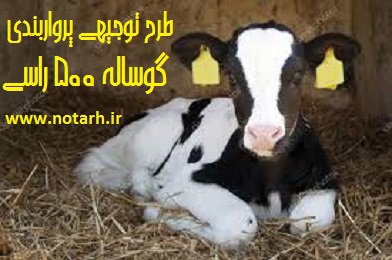 طرح توجیهی گوساله پرواری 500 راسی صنعتی
طرح توجیهی گوساله پرواری 500 راسی صنعتی
 طرح توجیهی گوسفند رومانوف 30 راسی
طرح توجیهی گوسفند رومانوف 30 راسی
 دانلود طرح توجیهی بره پرواری 200 راسی سال 99
دانلود طرح توجیهی بره پرواری 200 راسی سال 99
 طرح توجيهي گوسفند داشتی 50 راسی رومانوف
طرح توجيهي گوسفند داشتی 50 راسی رومانوف
 طرح توجیهی گوساله پرواری 20 راسی سال 99
طرح توجیهی گوساله پرواری 20 راسی سال 99
 دانلود طرح توجیهی گوساله پرواری 10 راسی
دانلود طرح توجیهی گوساله پرواری 10 راسی
 دانلود طرح توجیهی بره پرواری 150 راسی
دانلود طرح توجیهی بره پرواری 150 راسی
 طرح توجیهی بره پرواری 50 راسی 98
طرح توجیهی بره پرواری 50 راسی 98
 طرح توجیهی بره پرواری 400 راسی سال 98
طرح توجیهی بره پرواری 400 راسی سال 98

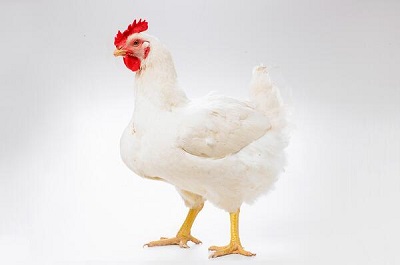 طرح توجیهی مرغ گوشتی 100 هزار قطعه ای
طرح توجیهی مرغ گوشتی 100 هزار قطعه ای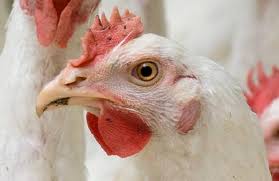 طرح توجیهی مرغ گوشتی 100000 قطعه ای
طرح توجیهی مرغ گوشتی 100000 قطعه ای.jpg) طرح توجیهی مرغ گوشتی 10000 قطعه ای
طرح توجیهی مرغ گوشتی 10000 قطعه ای طرح توجیهی پرورش گاو شیری 150 راسی
طرح توجیهی پرورش گاو شیری 150 راسی طرح توجیهی گاوداری شیری 5 راسی
طرح توجیهی گاوداری شیری 5 راسی طرح توجیهی گوسفند رومانوف 300 راسی پرتولید
طرح توجیهی گوسفند رومانوف 300 راسی پرتولید دانلود طرح توجیهی پرورش گوساله پرواری 15 راسی
دانلود طرح توجیهی پرورش گوساله پرواری 15 راسی  طرح توجیهی گلخانه 10000 متری صیفی جات
طرح توجیهی گلخانه 10000 متری صیفی جات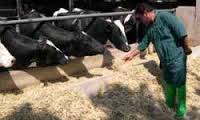 اموزش اصول و روش پرواربندی گاو گوساله و نکات مربوط به پروار و جیره
اموزش اصول و روش پرواربندی گاو گوساله و نکات مربوط به پروار و جیره  شروع کار و سرمایه گداری در گاوداری شیری وجیره مورد نیاز آن
شروع کار و سرمایه گداری در گاوداری شیری وجیره مورد نیاز آن بهترین نژاد گوساله گوشتی
بهترین نژاد گوساله گوشتی 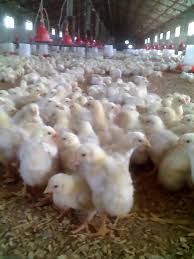 سرمایه گذاری و سود زیان در مرغداری به همراه طرح توجیهی
سرمایه گذاری و سود زیان در مرغداری به همراه طرح توجیهی پرواربندی بره یا گوساله و بررسی سود برای شروع کار
پرواربندی بره یا گوساله و بررسی سود برای شروع کار سایت دانشگاه پیام نور تفرش http://www.pnut.ac.ir/
سایت دانشگاه پیام نور تفرش http://www.pnut.ac.ir/ کاشت داشت برداشت لوبیا Phaseolus sp .
کاشت داشت برداشت لوبیا Phaseolus sp . بررسی سود پرواربندی بره به همراه جیره مناسب پروار گوسفند
بررسی سود پرواربندی بره به همراه جیره مناسب پروار گوسفند پورتال سایت دانشگاه پیام نور قم www.qompnu.ac.ir
پورتال سایت دانشگاه پیام نور قم www.qompnu.ac.ir ارائه و دانلود جدیدترین طرح های توجیهی مرغداری گوشتی تخمی گاوداری قارچ گوسفند
ارائه و دانلود جدیدترین طرح های توجیهی مرغداری گوشتی تخمی گاوداری قارچ گوسفند پاورپوینت تخت سلیمان
پاورپوینت تخت سلیمان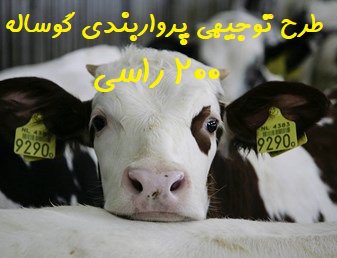 طرح توجیهی پرواربندی گوساله 200 راسی سال 97
طرح توجیهی پرواربندی گوساله 200 راسی سال 97 دانلود پاورپوینت فيزيولوژي سيستم عضلاني 48 اسلاید
دانلود پاورپوینت فيزيولوژي سيستم عضلاني 48 اسلاید دانلود پاورپوینت بررسی هنر و سبک معماری در مصر
دانلود پاورپوینت بررسی هنر و سبک معماری در مصر اموزش تدوین ویرایش و دانلود طرح توجیهی اماده کارافرینی
اموزش تدوین ویرایش و دانلود طرح توجیهی اماده کارافرینی